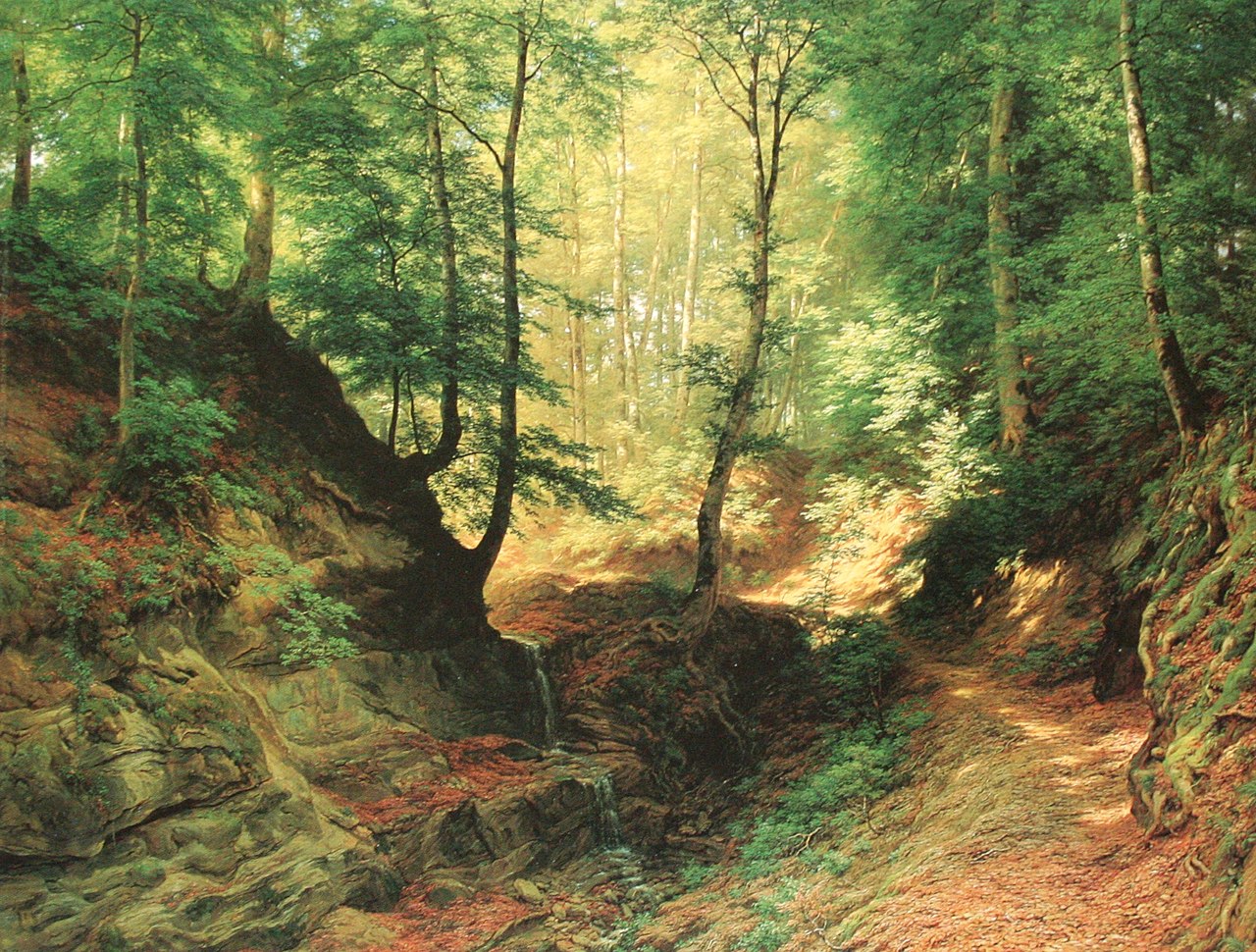Robert Zünd, Buchenwald, 1887
Source: Wikimedia Commons
In English the word 'Buchenwald' is synonymous with horror and darkness, but in German it still denotes one of nature's most beautiful things, a beech forest. This is a painting by a nineteenth century artist who became known as The Master of the Beech Leaf for his meticulous views of woods. Robert Zünd (1826-1909) walked and sketched in the forests around Lucerne, producing highly finished landscapes back in the studio that came in different sizes to suit the budgets of different potential buyers. His work can be found in most Swiss museums but is currently the subject of an exhibition, Bellevue, at the Kunstmuseum Luzern which pairs his paintings with large format analogue photographs by Tobias Madörin. Madörin is based in Zürich but has travelled widely working on a project called Topos which examines 'communal spaces, the outskirts of metropolises, waste disposals sites, and landscapes marked by agriculture and mining.' For Bellevue he has taken photographs around Lucerne, based on the compositions and methods of Robert Zünd.
Shows in which contemporary artists respond to old paintings that have hung for decades on museum walls are are very common these days. Just to mention one other example, I wrote here last year about George Shaw's Back to Nature at the National Gallery. Publicly funded institutions have a mission to make their collections engaging and accessible, which is why we don't really see the same phenomenon in other more 'private' art forms (though it is easy to imagine an anthology interspersing, say, tales by Poe with stories by a modern weird fiction writer, or an album juxtaposing nineteenth century études with a young composer's new works on similar themes). The key to making these exhibitions work, I think, is for the artist not to go down the obvious route of producing a kind of 'negative' version of the earlier art. As you can see above, Madörin has partially done this in photographing the effects of logging on Zünd's woodland, exposing the economic role of the landscape and questioning the idyllic impression of the original scenes. But he has also taken pains to produce photographs in tune with Zünd's desire to capture the splendour of natural phenomena. Zünd could paint a rainbow at leisure in his studio whereas Madörin had to wait for the real thing, pitching a tent and being prepared for a moment when light would shine forth from the stormy sky.



No comments:
Post a Comment